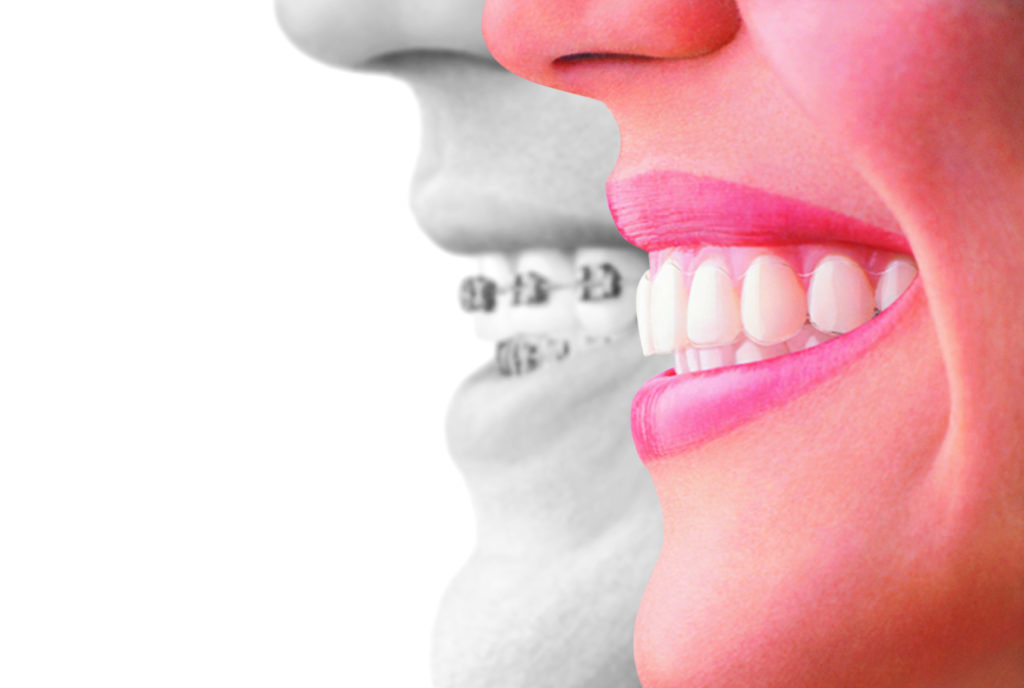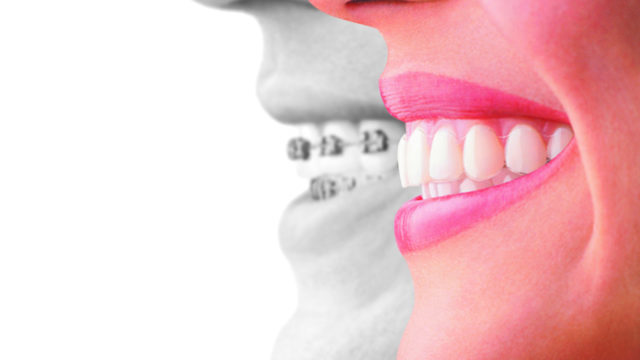 When you’re deciding between Invisalign and braces, there are a lot of considerations, but you should start by looking at the commitment required for each type. You need to determine how each orthodontic treatment fits with your lifestyle.
When you’re deciding between Invisalign and braces, there are a lot of considerations, but you should start by looking at the commitment required for each type. You need to determine how each orthodontic treatment fits with your lifestyle.
How Does Invisalign Work?
Invisalign is one brand of clear aligners, which are used to straighten teeth that are out of place. Clear aligners, which are also called “invisible braces,” are custom-made mouthpieces made of medical-grade plastic that put pressure on the teeth and move them into the right place. Clear aligners are a less obvious way to straighten your teeth than metal braces.
To decide which is better, shoppers should look at the pros and cons of both Invisalign and traditional braces.
Pros and Cons of Invisalign
Comfort and Aesthetics
Traditional metal braces have a much lower profile today than they did 20 years ago, but they are still visible every time you smile. They also can also rub up against the inside of your mouth, causing some discomfort. However, many wearers get so used to braces that they forget about them. Plus, you get to choose fun colors to show off your personality every time you smile. Make sure you follow our TikTok account @jefferson_dental to learn more about how to choose the best braces color for you. Invisalign is almost invisible because the trays are clear. It’s often difficult to know if somebody is wearing Invisalign unless you look closely or happen to catch them inserting or removing trays. There can be some discomfort for the first day or two of a new tray.
Orthodontic Appointments
Regular appointments are required for both types. With metal braces, follow-ups are scheduled every four to eight weeks to have your wires tightened. On the other hand, with Invisalign, you only need a follow-up when you’ve finished a set of trays, usually every ten weeks.
Treatment time may be longer than expected with Invisalign because they are removable, so if you’re not on top of wearing them and changing them out, your teeth won’t move according to plan.
Daily Care
Your daily oral care routine will change with any orthodontic treatment, but there are some distinct differences between Invisalign and traditional metal braces. You need to be prepared for the daily commitment before choosing Invisalign.
Because traditional metal braces are glued on your teeth, you wear them 24/7 and will need to learn how to brush and floss around the wires and brackets.
Invisalign can be a little more challenging for some people. It is easier to clean your teeth because you remove the trays to eat and drink. However, you have to be careful to brush thoroughly before putting your trays back in to prevent food and debris from getting stuck. You also need to wear your trays 20 to 22 hours per day to be effective. If you think you will have trouble keeping your trays in for most of the day, you may want to choose braces instead.
Repairs
Aside from regular appointments, you may need to be seen for broken wires or brackets if you wear metal braces. This is often a result of pressure or a hit to the mouth during sports. For this reason, it’s important to wear a mouthguard while engaging in intense physical activity while you have braces.
The Drawbacks of Clear Aligners
Not for Corrections That Are Difficult
Transparent aligners don’t work for everyone, and most of the time, they work best for people who only need a little straightening.
Remove to Eat
Patients can drink water with their Invisalign trays in, but they should take them out to eat or drink anything else. The plastic is soft, and food can easily break it. Also, the clear plastic is easy to stain and bends when it gets hot, so people who wear them should take them out when they drink hot or colored drinks.
Requires Discipline
The Invisalign aligner must be worn at least 20 to 22 hours a day. If you don’t wear them as much, you might not make as much progress or it may even hurt the end results. Because they are easy to take out, clear aligners should only be chosen by people who are responsible enough to wear them for the required number of hours every day. Another worry, especially for kids, is that they might lose their aligners, which would cost more money and take longer to treat.
Brush your teeth more.
If a person doesn’t take good care of their teeth, they shouldn’t wear an Invisalign aligner because it can lead to bad breath and cavities. After eating or drinking, people who wear braces should make sure to brush their teeth well. Since most people eat throughout the day, the time it takes to brush your teeth each day may double or even triple when you use Invisalign.
May need attachments that can be seen
Some people need small, tooth colored buttons that go on their teeth and connect to the clear aligners. An orthodontist must put these on and take them off because they help control how the teeth move. Because of this, people who need attachments may need more help than other people, and the attachments can be seen through the clear plastic.
Invisalign vs. Braces: Which is Faster?
Orthodontic treatment takes time because it is accomplished by gradually applying pressure to the teeth. When it comes to straightening teeth, Invisalign may yield faster results, but only if you are compliant with treatment. If you aren’t dedicated to wearing your trays enough during the day, you won’t see the results.
Keep in mind, traditional braces will give your orthodontist more control over how your teeth are moving. This makes them a better option for more complex cases that will take longer and require more adjustments.
The Cost of Invisalign vs. Braces
When making your decision, you’ll probably want to compare the price tag on Invisalign vs braces cost. Invisalign tends to cost more than traditional braces, but there’s not as much disparity between the two treatment options as you might think. It all depends on your treatment plan and how complex your case is.
Many orthodontists will offer special deals on orthodontics, including Invisalign. Your insurance may help with the cost of braces, and many offices have financing programs to make braces affordable.
Jefferson Dental offers convenient dental payment plans from as low as $99/per month.
Invisalign vs. Braces: Which is Better?
At the end of the day, choosing between Invisalign and traditional braces is a very personal decision. If you can afford Invisalign and commit to the treatment plan, your orthodontic treatment could be faster and more comfortable. However, if you can’t commit or you’re worried about losing trays, you may want to go the traditional route.
If you’re ready to start orthodontic treatment, the team at Jefferson Dental & Orthodontics is ready to help. We can answer your questions and get you started with affordable braces. Contact the Jefferson Dental & Orthodontics office nearest you to schedule your free consultation.




